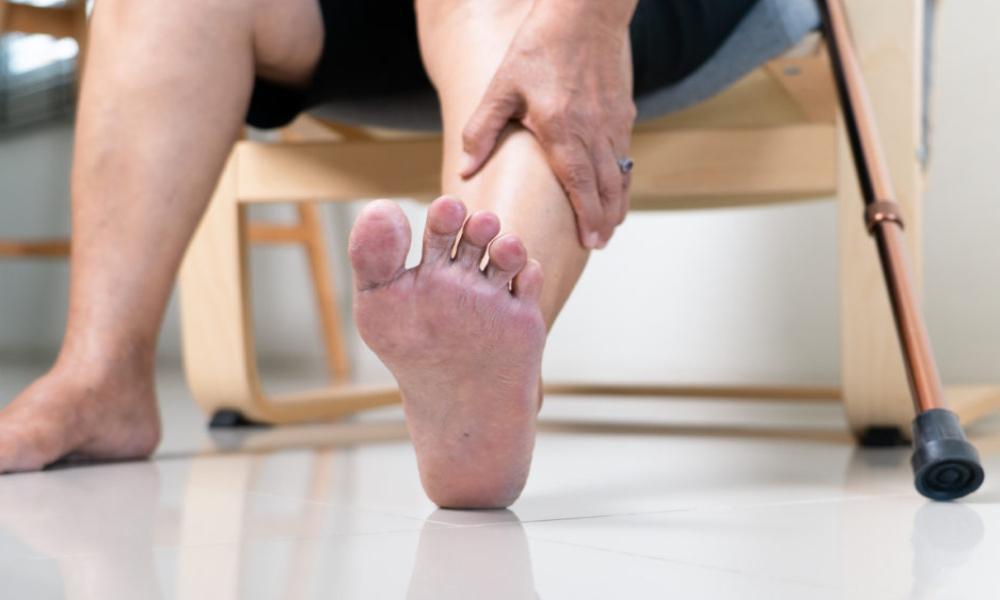Sores and ulcers are more common in people with diabetes. Ulcers are open sores (sometimes referred to as wounds) on the skin that do not heal properly. Ulcers are most common in the feet and legs, but they can also appear in other places, such as your hands or the folds of skin on your stomach.
One of the first early signs of a foot ulcer is drainage from your foot that might stain your socks or leak out in your shoe. Unusual swelling, irritation, redness, and odors from one or both feet are common early symptoms.
When it comes to treating diabetic foot ulcers, it’s important to understand the diabetic foot’s natural history, which may be split into five stages: stage 1, a normal foot; stage 2, a high-risk foot; stage 3, an ulcerated foot; stage 4, an infected foot; and stage 5, a necrotic foot.
Here are the different stages of a diabetic foot:
- Stage 1 – it is critical to encourage the patient to wear appropriate footwear and to educate them on proper foot care and footwear habits.
- Stage 2 – The foot has developed one or more of the following ulcer-causing risk factors: neuropathy, ischemia, deformity, edema, or callus. The majority of abnormalities may be tolerated with specific footwear, and because callus is a key precursor to ulceration, it should be aggressively treated, particularly in the neuropathic foot.
- Stage 3 – Ulcers in the neuropathic foot and the neuroischaemic foot can be distinguished. Ulcers on the plantar surface of the foot and the toes are frequent in the neuropathic foot and are related with neglected callus and excessive plantar pressures. Ulcers are widespread along the margins of the neuroischaemic foot, notably the apices of the toes and the back of the heel, and are linked to trauma or wearing inappropriate shoes. Pressure relief (mechanical control), sharp debridement and dressings (wound control) are required for stage 3 ulcers, and neuroischaemic foot ulcers may require vascular intervention (vascular control).
- Stage 4 – Microbiological management is critical, and severe infections necessitate intravenous antibacterial medication as well as an assessment of the necessity for surgical drainage and debridement as soon as possible. Severe infections will proceed to necrosis if not treated quickly.
- Stage 5 – Wet and dry necrosis are two types of necrosis. Wet necrosis in neuropathic feet necessitates intravenous antibiotics and surgical debridement, while wet necrosis in neuroischaemic feet necessitates vascular repair as well. Diabetic foot ulcers can be aggressively managed, reducing the number of feet that get infected and necrosed, and hence the incidence of severe amputations in diabetic patients.
And so in conclusion, what you should keep in mind is that it’s important to take care of your own feet and check it every day for signs of a diabetic foot. You may not see or feel anything that is slowly damaging your feet, so it is better to check it and go to your doctor for a further investigation. Always check for signs and complications that may occur.


 Home
Home









